-
 Bitcoin
Bitcoin $81,973.5211
-3.14% -
 Ethereum
Ethereum $1,771.8221
-4.70% -
 Tether USDt
Tether USDt $0.9996
-0.04% -
 XRP
XRP $2.0020
-4.93% -
 BNB
BNB $586.3762
-2.30% -
 USDC
USDC $0.9997
-0.03% -
 Solana
Solana $113.7739
-9.53% -
 Dogecoin
Dogecoin $0.1574
-7.43% -
 Cardano
Cardano $0.6244
-7.96% -
 TRON
TRON $0.2315
-2.36% -
 Toncoin
Toncoin $3.6020
-10.34% -
 UNUS SED LEO
UNUS SED LEO $9.3401
-1.03% -
 Chainlink
Chainlink $12.4356
-7.28% -
 Stellar
Stellar $0.2536
-4.73% -
 Avalanche
Avalanche $17.8372
-6.13% -
 Sui
Sui $2.2393
-7.83% -
 Shiba Inu
Shiba Inu $0.0...01195
-3.16% -
 Hedera
Hedera $0.1559
-5.48% -
 Litecoin
Litecoin $80.9170
-1.94% -
 Polkadot
Polkadot $3.8852
-4.23% -
 MANTRA
MANTRA $6.2821
-0.06% -
 Bitcoin Cash
Bitcoin Cash $298.6048
-1.78% -
 Bitget Token
Bitget Token $4.4929
-1.56% -
 Dai
Dai $0.9999
0.01% -
 Ethena USDe
Ethena USDe $0.9995
-0.03% -
 Monero
Monero $211.5827
-1.86% -
 Pi
Pi $0.5588
-16.11% -
 Hyperliquid
Hyperliquid $11.3193
-14.69% -
 Uniswap
Uniswap $5.7424
-4.67% -
 Aptos
Aptos $5.0458
-3.81%
Technical analysis methods of digital currency K-line charts
K-line charts are essential for crypto trading, showing price movements and patterns like hammers and dojis, aiding in trend analysis and decision-making.
Apr 02, 2025 at 11:22 pm
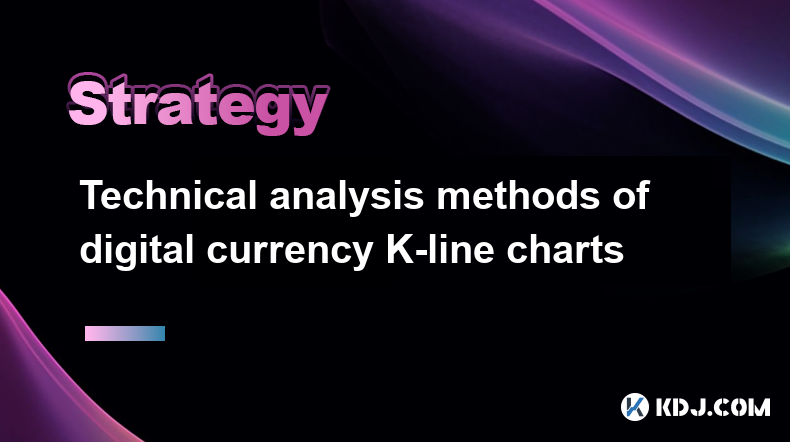
Understanding K-Line Charts in Cryptocurrency Trading
K-line charts, also known as candlestick charts, are a fundamental tool in technical analysis for cryptocurrencies. They visually represent price movements over a specific period, providing insights into market sentiment and potential future price action. Each candlestick represents the opening, closing, high, and low prices of a cryptocurrency within that time frame (e.g., 1 minute, 1 hour, 1 day). Understanding how to interpret these elements is crucial for effective trading. The body of the candlestick shows the opening and closing prices, while the wicks (shadows) represent the high and low prices reached during that period.
Deciphering Candlestick Patterns
Numerous candlestick patterns exist, each suggesting a potential shift in market momentum. Identifying these patterns requires practice and experience. Bullish patterns generally indicate a potential price increase, while bearish patterns suggest a potential price decrease. Some common patterns include:
- Hammer: A bullish reversal pattern characterized by a small body with a long lower wick.
- Inverted Hammer: A bearish reversal pattern, similar to a hammer but with a long upper wick.
- Engulfing Pattern: A strong reversal pattern where one candlestick completely engulfs the previous one. A bullish engulfing pattern signals a potential price increase, while a bearish engulfing pattern suggests a price decrease.
- Doji: A candlestick with almost equal opening and closing prices, indicating indecision in the market. Dojis often precede significant price movements.
- Shooting Star: A bearish reversal pattern with a long upper wick and a small body, suggesting a potential price drop.
Moving Averages and Their Significance
Moving averages are calculated by averaging the price over a specific period. They smooth out price fluctuations, making it easier to identify trends. Common moving averages include simple moving averages (SMA) and exponential moving averages (EMA). SMAs give equal weight to each data point, while EMAs give more weight to recent data points. Traders often use multiple moving averages to identify support and resistance levels, as well as potential trend changes. A bullish crossover occurs when a shorter-term moving average crosses above a longer-term moving average, suggesting a potential uptrend. Conversely, a bearish crossover indicates a potential downtrend.
Relative Strength Index (RSI) and its Application
The RSI is a momentum indicator that measures the magnitude of recent price changes to evaluate overbought or oversold conditions. It oscillates between 0 and 100. Generally, an RSI above 70 is considered overbought, suggesting a potential price correction, while an RSI below 30 is considered oversold, suggesting a potential price rebound. However, it's crucial to remember that RSI divergences can also occur, where the price makes a new high or low, but the RSI fails to confirm it. This divergence can signal a potential trend reversal.
Support and Resistance Levels
Support levels represent price points where buying pressure is strong enough to prevent further price declines. Resistance levels are price points where selling pressure is strong enough to prevent further price increases. These levels are often identified by observing previous price highs and lows on the K-line chart. Breakouts above resistance levels can signal a bullish trend, while breakdowns below support levels can signal a bearish trend. However, it's important to note that support and resistance levels are not absolute; they can be broken.
Volume Analysis in Conjunction with K-Lines
Volume analysis provides crucial context to K-line chart interpretation. High volume confirms price movements, indicating strong conviction behind the price action. For instance, a breakout above resistance with high volume is a stronger bullish signal than a breakout with low volume. Conversely, low volume during a price movement can suggest weak conviction and a potential reversal. Analyzing volume alongside candlestick patterns and moving averages provides a more comprehensive picture of market dynamics.
Fibonacci Retracements and Extensions
Fibonacci retracements and extensions are based on the Fibonacci sequence, a mathematical sequence found in nature. These tools are used to identify potential support and resistance levels based on previous price swings. Retracements measure potential pullbacks within an established trend, while extensions project potential price targets for the continuation of a trend. Traders often use these tools to place stop-loss orders and take-profit orders.
Combining Technical Indicators for Enhanced Analysis
While individual indicators can provide valuable insights, combining multiple indicators often leads to more accurate predictions. For example, combining moving averages with RSI and candlestick patterns can provide a more comprehensive view of market sentiment and potential price movements. However, it's crucial to understand the limitations of each indicator and avoid relying solely on technical analysis. Fundamental analysis should also be considered for a complete trading strategy.
Frequently Asked Questions
Q: What is the most important aspect of K-line chart analysis?
A: Understanding the context of candlestick patterns, volume, and the relationship between price action and technical indicators is crucial. No single element provides a complete picture.
Q: How many moving averages should I use?
A: There's no magic number. Experiment with different combinations to find what works best for your trading style and the specific cryptocurrency you're analyzing. Common combinations include 50-day and 200-day SMAs, or 12-period and 26-period EMAs.
Q: Are candlestick patterns always reliable?
A: No, candlestick patterns are not foolproof. They should be used in conjunction with other technical indicators and considered alongside fundamental analysis. False signals can and do occur.
Q: How do I identify support and resistance levels effectively?
A: Look for previous price highs and lows that have acted as significant turning points. Multiple touches at the same level often strengthen its significance as a support or resistance level.
Q: Can I use K-line charts for all cryptocurrencies?
A: Yes, K-line charts are applicable to all cryptocurrencies. However, remember that each cryptocurrency has its unique characteristics and market dynamics. Analysis should be tailored to the specific asset.
Q: What are the limitations of technical analysis using K-line charts?
A: Technical analysis is based on historical price data and does not predict the future with certainty. Unexpected news or events can significantly impact price movements, regardless of technical indicators. It's essential to combine technical analysis with fundamental analysis and risk management.
Disclaimer:info@kdj.com
The information provided is not trading advice. kdj.com does not assume any responsibility for any investments made based on the information provided in this article. Cryptocurrencies are highly volatile and it is highly recommended that you invest with caution after thorough research!
If you believe that the content used on this website infringes your copyright, please contact us immediately (info@kdj.com) and we will delete it promptly.
- Why XRP Investors Are Rushing to ExoraPad Presale
- 2025-04-03 21:45:12
- Polkadot (CRYPTO: DOT) cryptocurrency isn't getting any market love these days
- 2025-04-03 21:45:12
- Despite Launching the RLUSD Stablecoin, XRP Price Dips as Trump's Tariffs Trigger Market Turmoil
- 2025-04-03 21:40:11
- Ripple Has Once Again Unlocked a Massive 1 Billion XRP
- 2025-04-03 21:40:11
- Bitcoin price crashes to $80k as Trump announces tariffs on 50+ countries
- 2025-04-03 21:35:12
- Prominent crypto analyst sparks excitement with bold forecasts for Ethereum and Ripple
- 2025-04-03 21:35:12
Related knowledge

How to use the three crows candlestick combination to determine the market top?
Apr 03,2025 at 03:18pm
Three Black Crows are a classic K-line combination form that is often used to judge the top of the market in technical analysis. This pattern consists of three consecutive negative lines, the opening price of each negative line is within the entity of the previous K-line, and the closing price gradually decreases. This pattern usually appears at the end...
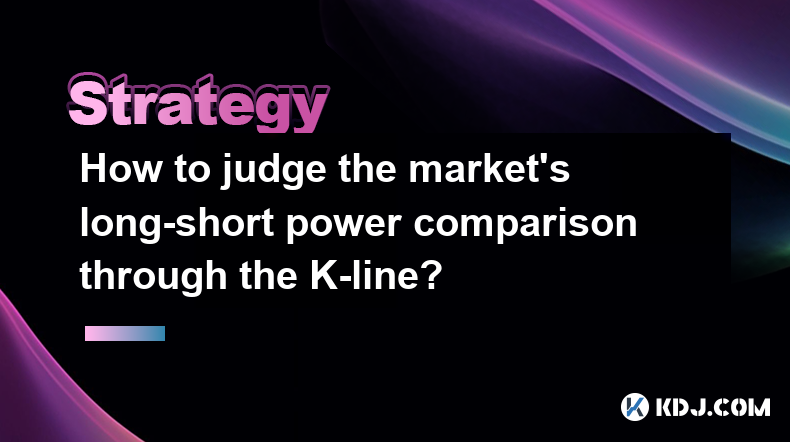
How to judge the market's long-short power comparison through the K-line?
Apr 03,2025 at 02:39pm
Judging the market's long-short power comparison through the K-line is an important skill in technical analysis. The K-line chart can not only show price changes, but also reflect the emotions and power comparison of market participants. This article will introduce in detail how to judge the market's long-short power comparison through K-lines. ...
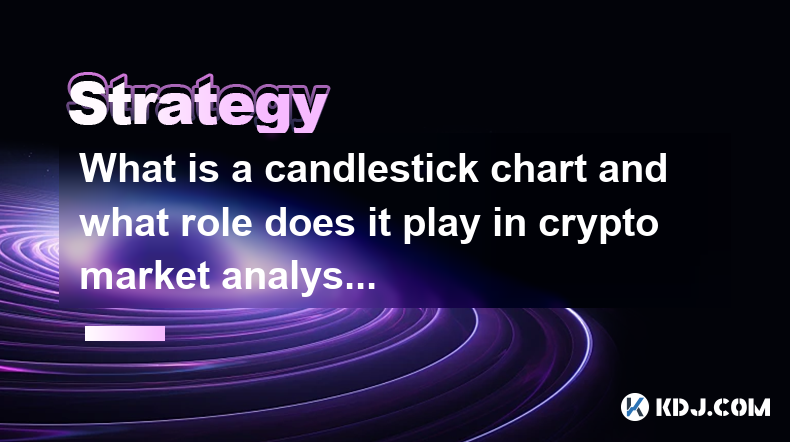
What is a candlestick chart and what role does it play in crypto market analysis?
Apr 03,2025 at 02:26pm
K-line chart, also known as candle chart, is a form of chart used to display changes in the price of financial products. In the cryptocurrency market, K-line charts are widely used to analyze the price trends of digital assets such as Bitcoin and Ethereum. This article will introduce in detail the basic structure, types of K-line charts and their specif...
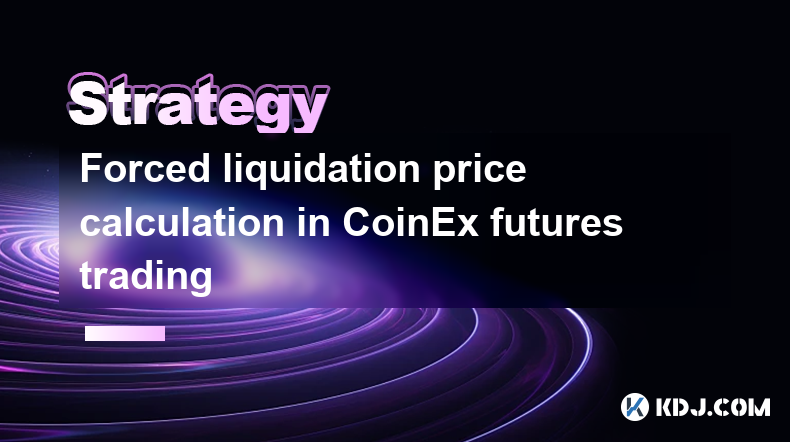
Forced liquidation price calculation in CoinEx futures trading
Apr 03,2025 at 05:35am
In CoinEx futures trading, understanding the forced liquidation price is crucial for managing risk and maintaining your positions. The forced liquidation price is the point at which your position is automatically closed to prevent further losses. This mechanism is designed to protect both the trader and the platform from negative account balances. The c...
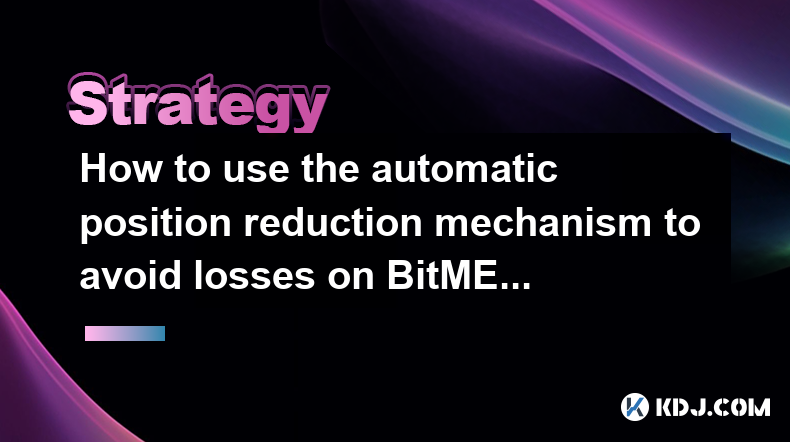
How to use the automatic position reduction mechanism to avoid losses on BitMEX
Apr 03,2025 at 02:56am
Using the automatic position reduction mechanism on BitMEX can be a strategic approach to managing risk and avoiding potential losses in the volatile cryptocurrency market. This feature, also known as Auto Deleveraging (ADL), is designed to help traders by automatically reducing their positions in certain conditions. To effectively use this mechanism, i...
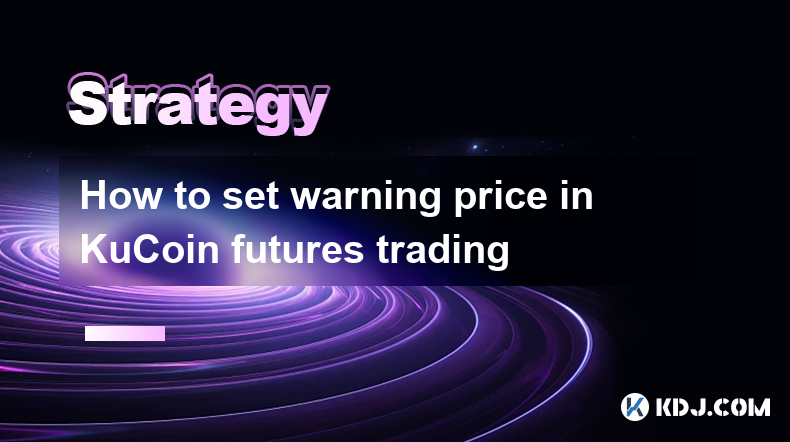
How to set warning price in KuCoin futures trading
Apr 03,2025 at 08:14am
Setting a warning price in KuCoin futures trading is an essential feature for managing risk and staying informed about market movements. This tool allows traders to receive notifications when the price of a futures contract reaches a specific level, helping them make timely decisions. To set a warning price, you need to navigate to the futures trading i...

How to use the three crows candlestick combination to determine the market top?
Apr 03,2025 at 03:18pm
Three Black Crows are a classic K-line combination form that is often used to judge the top of the market in technical analysis. This pattern consists of three consecutive negative lines, the opening price of each negative line is within the entity of the previous K-line, and the closing price gradually decreases. This pattern usually appears at the end...

How to judge the market's long-short power comparison through the K-line?
Apr 03,2025 at 02:39pm
Judging the market's long-short power comparison through the K-line is an important skill in technical analysis. The K-line chart can not only show price changes, but also reflect the emotions and power comparison of market participants. This article will introduce in detail how to judge the market's long-short power comparison through K-lines. ...

What is a candlestick chart and what role does it play in crypto market analysis?
Apr 03,2025 at 02:26pm
K-line chart, also known as candle chart, is a form of chart used to display changes in the price of financial products. In the cryptocurrency market, K-line charts are widely used to analyze the price trends of digital assets such as Bitcoin and Ethereum. This article will introduce in detail the basic structure, types of K-line charts and their specif...

Forced liquidation price calculation in CoinEx futures trading
Apr 03,2025 at 05:35am
In CoinEx futures trading, understanding the forced liquidation price is crucial for managing risk and maintaining your positions. The forced liquidation price is the point at which your position is automatically closed to prevent further losses. This mechanism is designed to protect both the trader and the platform from negative account balances. The c...

How to use the automatic position reduction mechanism to avoid losses on BitMEX
Apr 03,2025 at 02:56am
Using the automatic position reduction mechanism on BitMEX can be a strategic approach to managing risk and avoiding potential losses in the volatile cryptocurrency market. This feature, also known as Auto Deleveraging (ADL), is designed to help traders by automatically reducing their positions in certain conditions. To effectively use this mechanism, i...

How to set warning price in KuCoin futures trading
Apr 03,2025 at 08:14am
Setting a warning price in KuCoin futures trading is an essential feature for managing risk and staying informed about market movements. This tool allows traders to receive notifications when the price of a futures contract reaches a specific level, helping them make timely decisions. To set a warning price, you need to navigate to the futures trading i...
See all articles























































































